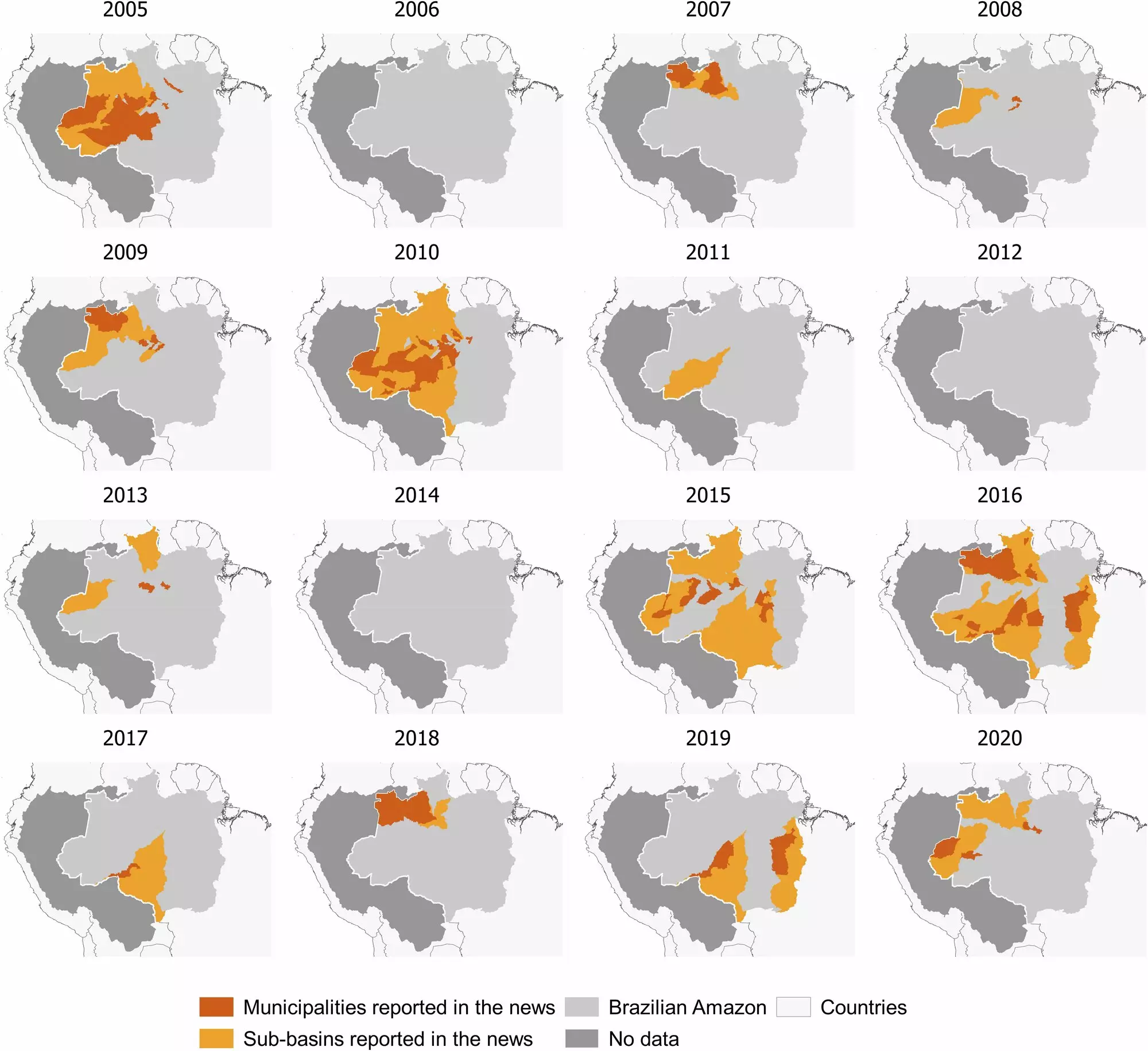Over the last twenty years, the Amazon basin has experienced a concerning uptick in severe droughts, forcing profound changes in the lifestyle and wellbeing of its local communities. A groundbreaking study from the Institute of Environmental Science and Technology (ICTA-UAB) sheds light on a worrying trend: prolonged periods of low water levels that now last about a month longer than they traditionally have. Such changes in the hydrological systems not only threaten the rich biodiversity of the Amazon but also implicate significant socio-economic ramifications for the indigenous and non-indigenous populace alike.
This reality urges policymakers to reassess their strategies in addressing the climate crisis that looms over the Amazon. Scientific evidence showcases that nearly half of the non-indigenous localities, along with over 54% of Indigenous villages, are at risk of severe isolation due to these environmental shifts. This is especially relevant in a region where riverine transportation remains the linchpin for accessing essential goods and services.
Complex Interactions: Droughts, Ecosystems, and Communities
The comprehensive study led by Brazilian researcher Letícia Santos de Lima, alongside her collaborators from the Universidade Federal de Minas Gerais and the Woodwell Climate Research Center, highlights a grim reality of climate change: the interactions between environmental degradation and human survival. Extreme droughts disrupt river navigability, which serves as a vital transportation network for countless Amazonian communities.
From fisheries to medical care, every aspect of life in the Amazon is intricately linked to the health of its waterways. When rivers dry up for extended periods – sometimes exceeding 100 days – communities find themselves trapped in a cycle of scarcity, lacking access to basic needs. The situation becomes particularly dire for rural populations, where the absence of conventional roads renders solutions like increased vehicular access impractical.
The Urgent Need for Action
Dr. Letícia Santos de Lima emphasizes that the Amazon’s new drought patterns should serve as a catalyst for urgent policy interventions. Current governmental responses fall short; they remain predominantly reactive rather than proactive and strategic, failing to prioritize long-term resilience against climate-induced hardships. The disconnect reveals a systemic failure to integrate scientific research with the realities faced by the people living in these regions.
What the policymakers need to understand is the futility of constructing new roads in a fragile ecosystem; such initiatives only fuel further deforestation and exacerbate the vulnerabilities of these communities. Increased land clearing leads to changes in rainfall patterns and introduces more sediments into the rivers, diminishing their capacity for navigability even further. This vicious cycle calls into question the very foundations of traditional developmental strategies in the Amazon.
Reimagining Solutions: The Role of Community and Technology
Given the intertwined relationship between humans and nature, a more sustainable approach could involve leveraging modern technologies to devise adaptive strategies specific to the challenges of the Amazon. For example, remote sensing technology may facilitate the monitoring of water levels and provide timely warnings to communities at risk. Employing such tools could empower populations to prepare better and innovate localized solutions to their problems.
Furthermore, engaging local populations in decision-making processes ensures that any proposed strategies are culturally sensitive and contextually relevant. This represents not just a practical approach but also an ethical obligation to respect the knowledge systems and traditions that Indigenous communities have cultivated over centuries.
Addressing the challenges posed by the increasing frequency and severity of droughts in the Amazon basin requires embracing a multi-faceted and inclusive approach. Climate change does not operate in isolation; the poor responses we observe today can set a harmful precedent for generations to come. It is our collective responsibility to create transformative solutions that prioritize environmental integrity, social justice, and sustainable livelihood, ensuring a harmonious existence for both communities and the ecosystem. The Amazon deserves far more than reactive measures – it calls for action that resonates with its profound complexity and significance.

